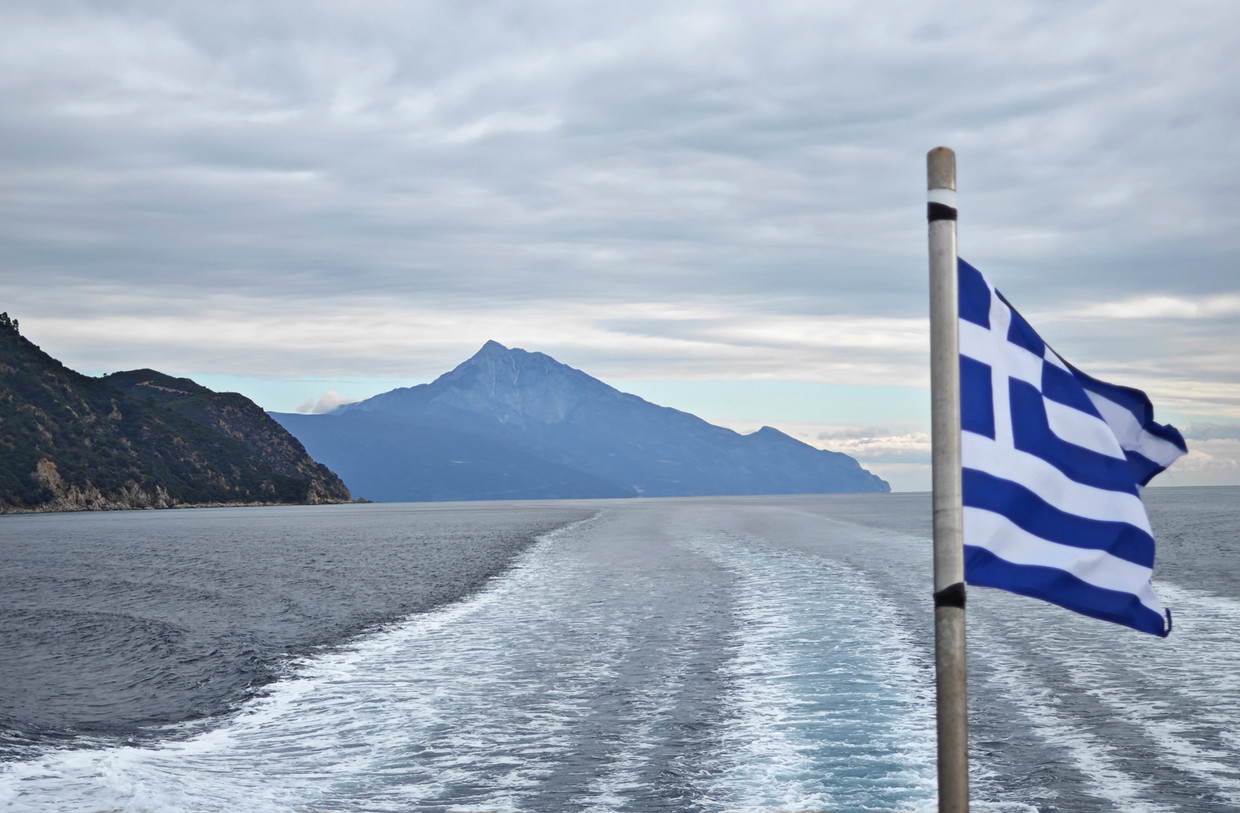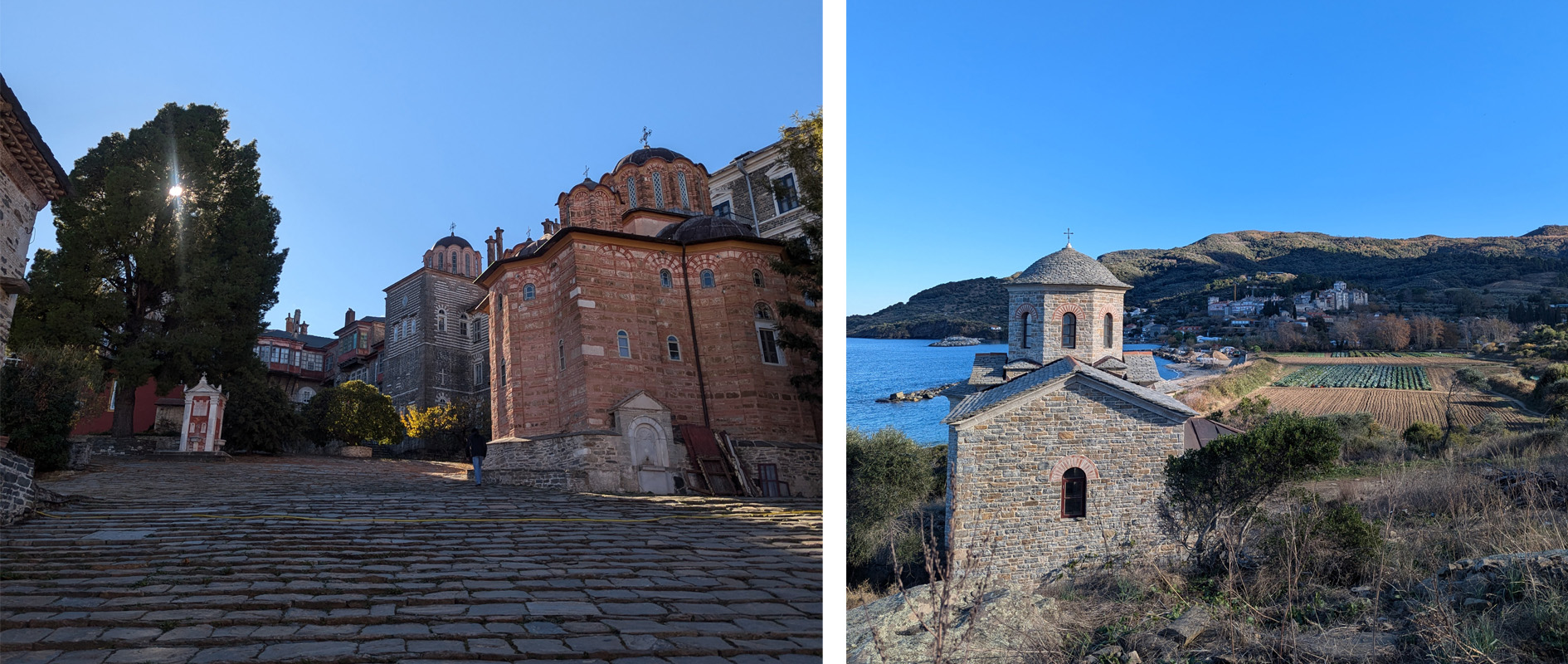Legacy Icons on the Holy Mountain
The approach to the Holy Mountain.
In November, several Legacy Icons staff traveled to Greece for meetings at Vatopedi Monastery on Mount Athos, and to attend the Post-Humanism and Artificial Intelligence Conference (PHAICON) in Athens. The trip began at the conference where more than a hundred clergy, researchers, and experts gathered to discuss the opportunities and challenges that artificial intelligence (AI) and other new technologies and ideas are presenting.
After the conference, they toured sacred sites in historic Thessaloniki, Greece, and spent a day at Vatopedi Monastery on the Holy Mountain. Meeting with monastic officials and touring the ancient grounds, they viewed several of the original icons that we faithfully reproduce back in Michigan, as well as sampled some of the monks’ rich incense blends to add to our online offering.
See below for photos and an interview with one of the staff from Legacy Icons about their experience.
On a side note, as AI and new technologies directly concern the understanding of the person, and one’s personhood in Christ, they also concern iconography. As Legacy Icons’ is playing an integral part in preserving the past for the sake of the future, we are carefully considering how new technologies may be safely used, or avoided, to continue the historic practices of iconography and related Christian arts. Stay tuned for more news about our commitment to digital integrity.
Scenes from Vatopedi Monastery
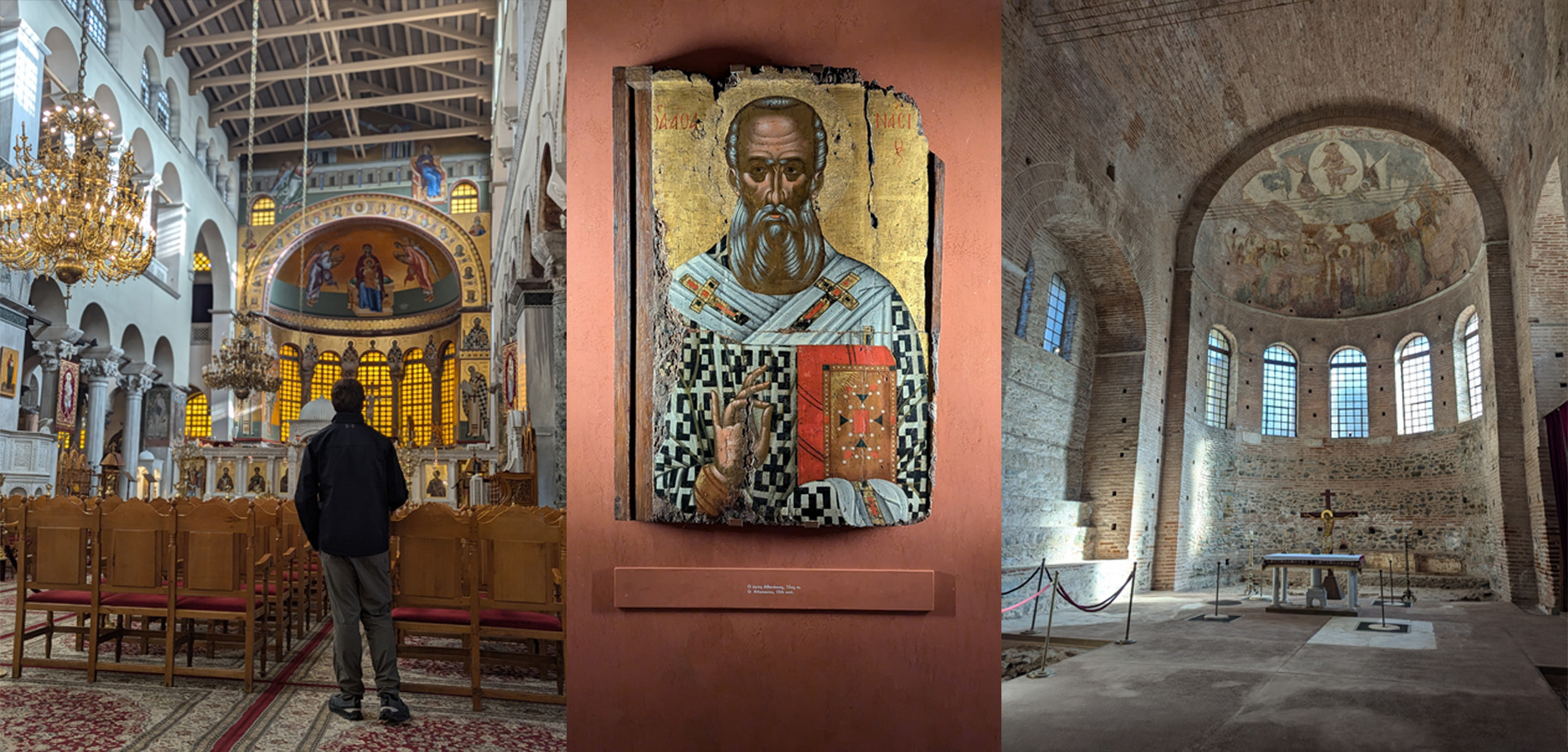
Left to Right: Church of St. Demetrius in Thessaloniki; icon of St. Athanasios, 15th Century at the Museum of Byzantine Culture, Thessaloniki; inside the Rotunda in Thessaloniki, early 4th Century.
A Spiritual and Historical Journey: A Brief Interview with Tanner DeJonge
What was your experience like on Mount Athos?
When we first set out for the Holy Mountain, I wasn’t entirely sure what to expect. I’d heard a variety of stories—some focused on the spiritual growth and gaining a deeper understanding, while others told of the physical beauty of Mount Athos and its stunning peninsula. I knew our trip would be brief and so I tried to just be open.
As the ferry departed for Mount Athos, the natural beauty revealed itself almost immediately. The vast landscapes and the small chapels scattered along the shoreline were breathtaking. As we got closer, the olive groves and vineyards surrounding the monastery came into view, alongside the fortress-like structures that have safeguarded the monastery for nearly a thousand years.
When the ferry docked, we were unsure of what to do or where to go. Like many first-time pilgrims, we simply followed the others, marveling at the sheer size and age of the monastery. The most profound part of my experience was attending the services. Worshiping and praying in a place that has held daily services for almost a millennium was deeply moving. The frescoes, some over 600 years old, and the miracle-working icons in the katholikon were awe-inspiring. Listening to the monks recount the countless miracles associated with these icons added an unforgettable spiritual depth to the experience.
What was your favorite part of the trip?
While Mount Athos was the highlight, visiting the churches in Thessaloniki was equally incredible. The combination of history, art, and spirituality made the experience truly amazing.
What stood out to you about Thessaloniki?
Thessaloniki is a treasure trove of history and faith. What struck me most were the beautifully preserved churches with their intricate architecture and frescoes. Venerating relics, especially those of St. Gregory Palamas and St. Demetrios, was a profoundly humbling experience.
One unforgettable moment was attending Vespers at the Church of St. Demetrios. The history of the church was palpable—the ancient icons that survived fires, the relics of St. Demetrios exuding myrrh, and the countless miracles attributed to him all left a deep impression. The scent of the myrrh was a powerful reminder of the importance of the living faith embodied in these relics.
Did you come away with anything you’d like to share with our readers?
One thing that stood out to me was the timeless significance of icons. Living in America, it’s easy to lose sight of just how integral these works of art have been to Christianity throughout history. Hearing about the age of an icon, like the 6th-century Christ Pantocrator from Saint Catherine’s Monastery, is one thing—but seeing ancient icons and mosaics in person is something else entirely.
In Thessaloniki, I encountered mosaics from the 5th and 6th centuries. Standing before them, you could feel their age, their weight, and their value—not just as art but as spiritual treasures that have been cherished for centuries.
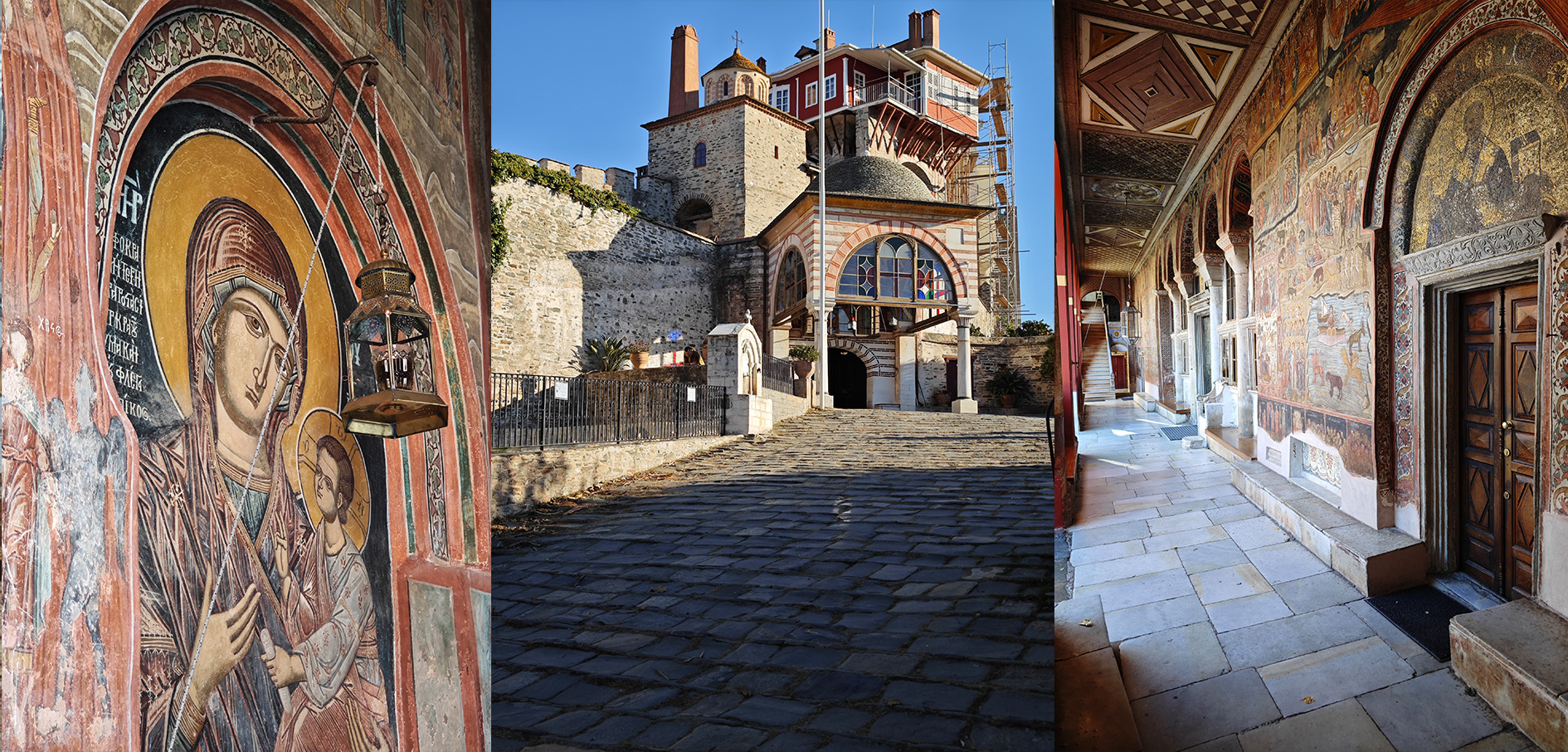
Scenes from Vatopedi Monastery
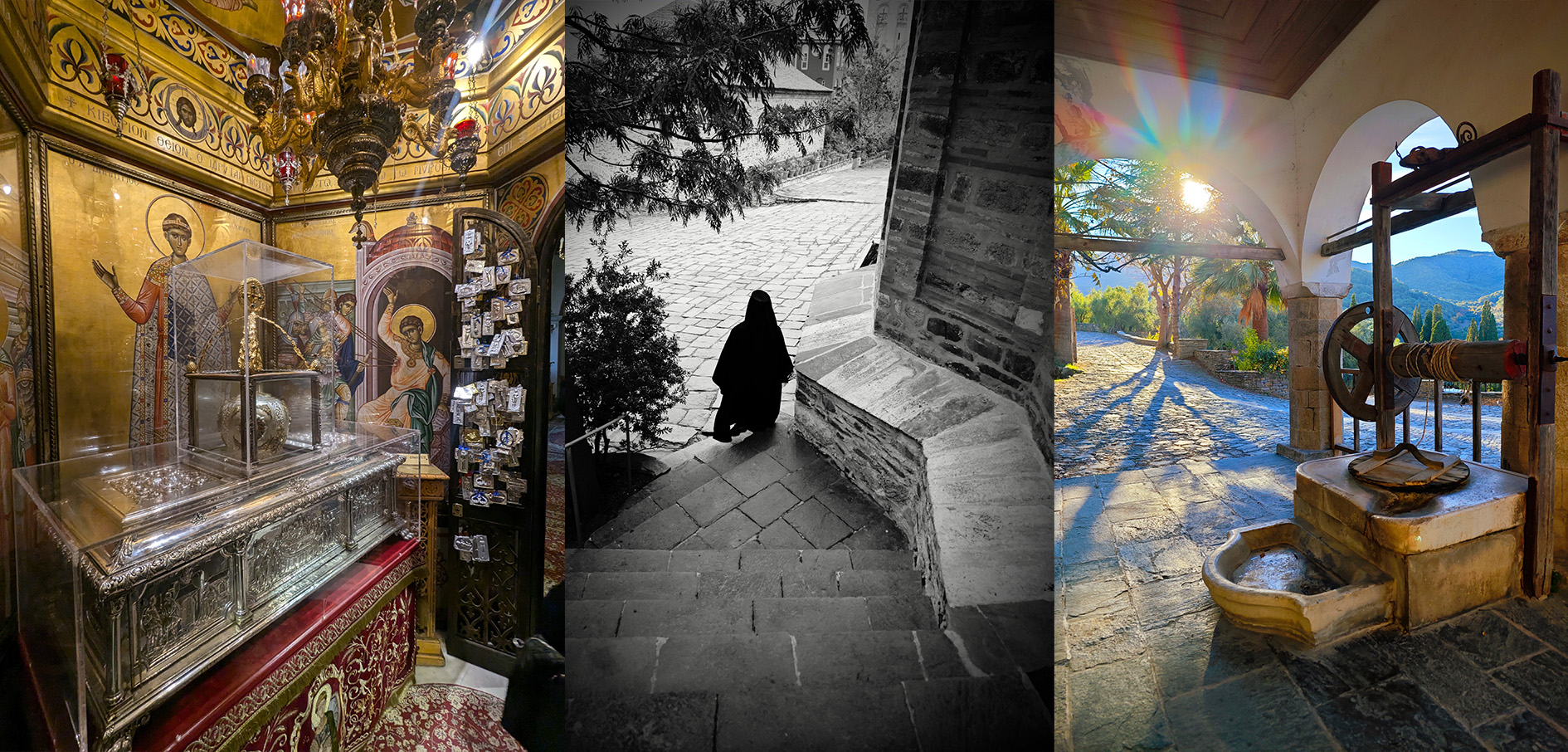
Relics of St. Demetrius at the Church of St Demetrius in Thessaloniki; scenes from Vatopedi Monastery


